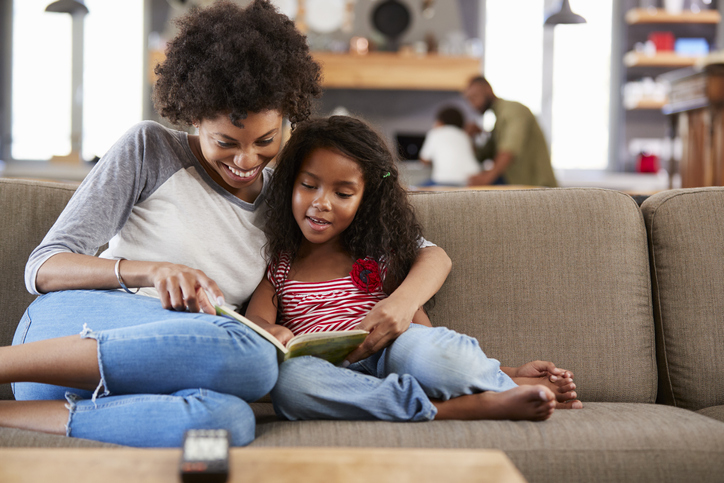Autism and Anxiety: 10 Strategies to Help Your Child
For children with autism spectrum disorder (ASD), the prevalence of anxiety is shown to be greater than for their peers. Some studies indicate that anxiety disorders are present 40% of the time for children with autism. The good news about taking this into consideration is that for children, caregivers, and teachers, being able to understand how anxiety plays a part in the experience can help you and your child communicate needs, prepare ahead of time, and learn coping strategies that can help calm anxiety and make childhood more enjoyable.
Many Children Have Anxiety
Children come into this world with little knowledge of the world around them. As they grow they explore their environment, acquire knowledge about social norms, facts, and what is expected and accepted. For children with autism spectrum disorder the expectations are the same. Learning how to interact with peers, teachers, and parents is a process that each developing child navigates.
Take a moment to think about your own experiences when trying something new. If you’ve never tried a specific activity before, it may bring up a sense of the uncertainty, a concern of failure or that you might not enjoy it. On the other hand it could bring an exuberant enthusiasm of getting to do something that might be awesome!
Children amazingly and beautifully catapult themselves into these experiences every day. However, for some children these new experiences can cause anxiety as they navigate their surroundings.
Here are ten strategies to help your child with anxiety:
This video is made using InVideo.io
1. Recognize stressors that trigger anxiety.
Fears and Phobias
Children with autism may have fears including: insects, snakes, mechanical toys or machines that move, storms and weather related disasters, loud noises such as vacuum cleaners and blenders, crowds and small spaces.
Social-Emotional Stressors
Images
2. Communicate with your child about upcoming activities.
As we can all attest, change is hard and can cause anxiety! The more information your child has about upcoming events and experiences, the more prepared they will be.
Use visuals, schedules, and even stories to relay how upcoming activities or the daily routine will look and feel. Some parents have also suggested acting out scenarios for their children or using a social story. By modeling upcoming events through a social story, children may be more likely to handle the situation in a calm manner. Stages Learning Language Builder Sequencing Cards help children navigate transitions by providing visual cues as to what is going to happen next such as washing hands, brushing teeth, or what is involved in going to the grocery store. Because children with autism are frequently visual learners it can help children understand a social story by providing a set of cards indicating next steps.
Inform your child ahead of any anticipated experiences. Bring familiarity to experiences by introducing things slowly and repeat the occurrence often, so that it becomes familiar to the child. The 2017 research article by O’Nions et al., discusses some of these strategies that parents use.
3. Think from the perspective of your child.
Noise and tight spaces can make any person feel a bit cramped, upset, or on edge. For children with autism some of these experiences can be unbearable. Think from the perspective of your child and assess the environmental area. Is the area particularly crowded, noisy, or cramped? Is there an itchy material or a strong smell?
Limit stressors when possible. For example, go together to the grocery when crowds are smaller, wait until your child has earplugs in before running a vacuum, and limit the use of air fresheners if your child is sensitive to odors. These factors apply in school as well. For example, a child may physically need more space to work during an activity.
4. Have a familiar routine for transitions.
Since change is hard, transitions between activities can be challenging for children with autism. It can feel disruptive to the child, particularly if he or she is deeply engaged. Create a consistent routine that is familiar to the child to use for transitions in school and at home. Examples may include a consistent order and clean-up method for placing everything back in its place. A consistent song used during cleanup can also bring familiarity to the transition.
5. Find time to relax.
I am talking about you- Parents, Caregivers, Teachers, and Specialists! For all of you loving caregivers you need time to relax and nourish your soul. Your mental health is as important as your child’s. Having a child with autism can be stressful at times and put strain on family life, to no intention from the child. Find the things you love, that ground and nourish you, and carve out time to do these activities. Being able to support your child through anxiety also means being able to give to yourself.
6. Provide structure and activities.
Children are constantly learning and growing and enjoy being involved in activities that keep them engaged. Providing children with enjoyable activities can help calm and assuage them. It also reduces boredom and indirectly can reduce behavioral disruption.
To stay engaged children can help with chores around the house, work on a project related to a topic they enjoy, use a technological device to play an educational game, or read or spend time outside.
7. Try Cognitive Behavioral Therapy (CBT).
Therapy is personal to the individual. Cognitive Behavioral Therapy (CBT) has been used with children to expose them to and familiarize them with stressors and fears that cause anxiety. By doing so it conditions the individual to feel more comfortable around these stressors, reducing his or her anxiety. The study linked here by Clark et al., showed positive outcomes for children with autism in a school setting and discusses some child reported stressors.
8. Keep clear and open communication between caregivers at home and school.
 Consistency and clarity for the child are very important. And it’s the same for the parent and caregiver, teacher, and specialist. You each need clarity and understanding of the child’s experience and what is being communicated to the child when he or she is not in your care. Also, if you have a method that works well with the child, or if the child is struggling, sharing this with the other caregivers can only benefit the child and his or her care. A holistic plan can make it easier for all involved.
Consistency and clarity for the child are very important. And it’s the same for the parent and caregiver, teacher, and specialist. You each need clarity and understanding of the child’s experience and what is being communicated to the child when he or she is not in your care. Also, if you have a method that works well with the child, or if the child is struggling, sharing this with the other caregivers can only benefit the child and his or her care. A holistic plan can make it easier for all involved.
9. Make goals achievable for the child.
Children are aware when they are not able to live up to expectations of those around them, and this can create anxiety. Helping provide achievable goals for all children is important. Celebrate children’s strengths and remind them that growing and learning is a process -no one started out knowing how to do everything.
10. Recognize when behavioral disruption is related to anxiety.
Many children act out not to be disruptive but because they are challenged by something. Often children with autism will act out or behave disruptively when they are struggling with anxiety or stressors in their environment. By recognizing these cues you can address the root cause of the disruption, assuage the child’s anxiety or remove the stressor, and improve behavioral outbursts.
Additional articles related to anxiety and autism:
Six Simple Mindfulness Practices for Kids with Autism
Social Thinking: 6 Strategies for Teaching Children with Autism
Applying Brene Brown’s Rising Strong to Autism
Mental Health Empowerment: Providing Compassionate and Client-Centered Support for People With Autism
Arielle Doochin
Arielle is a senior learning experience designer and writer who has created online, print, and blended educational materials for a diverse range of learners. Her academic background in the principles of education, neuroscience, and psychology informs her work in enhancing comprehension and promoting a sense of exploration in the design and facilitation of educational products.





